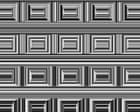We may believe we see the world exactly as it is – but as studies of optical illusions show, it’s far more complex than that
-
Anil Seth is a professor of cognitive and computational neuroscience at the University of Sussex
Do people from different cultures and environments see the world differently? Two recent studies have different takes on this decades-long controversy. The answer might be more complicated, and more interesting, than either study suggests.
One study, led by Ivan Kroupin at the London School of Economics, asked how people from different cultures perceived a visual illusion known as the Coffer illusion. They discovered that people in the UK and US saw it mainly in one way, as comprising rectangles – while people from rural communities in Namibia typically saw it another way: as containing circles.



















